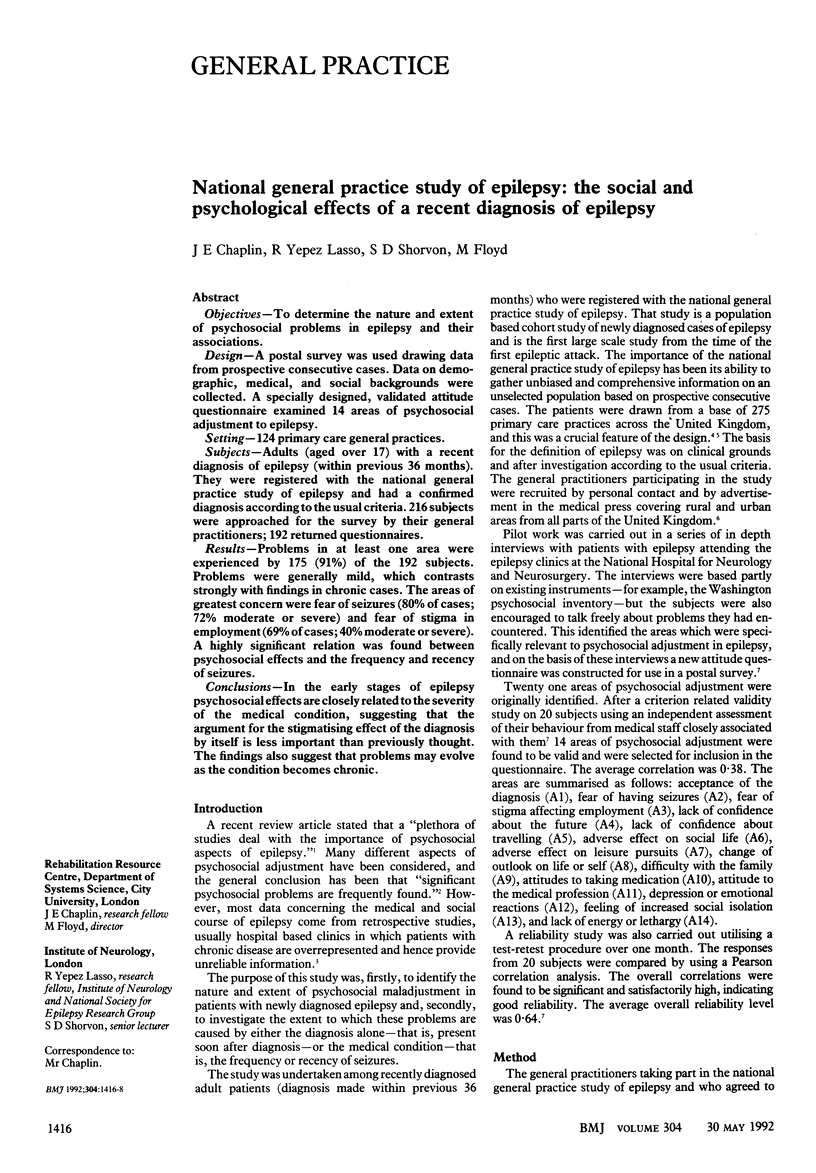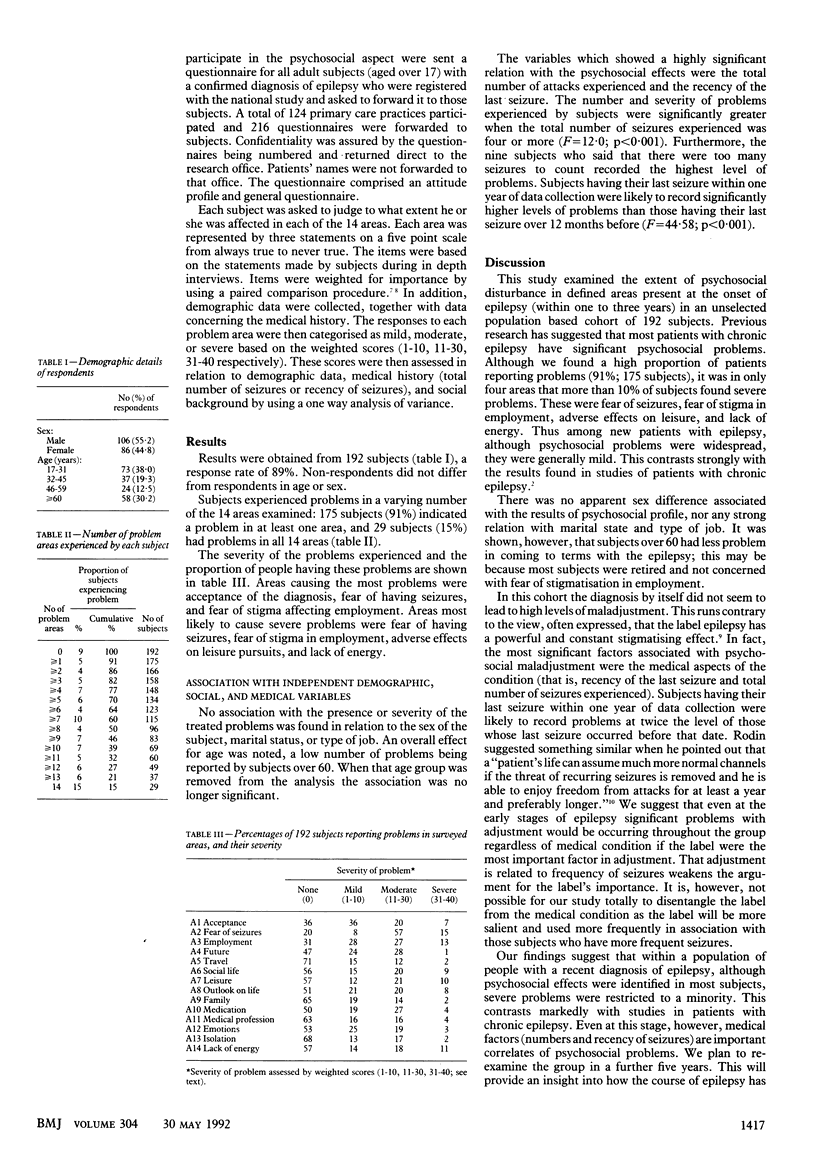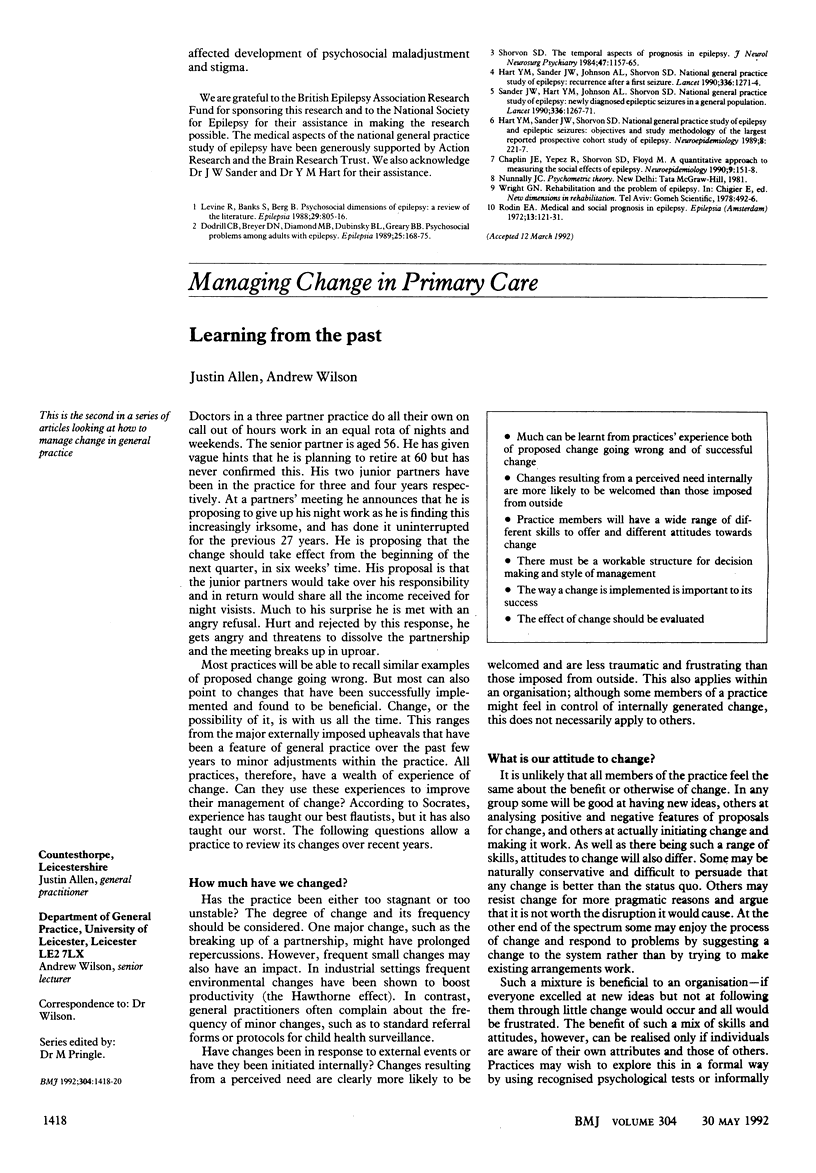Abstract
OBJECTIVES--To determine the nature and extent of psychosocial problems in epilepsy and their associations. DESIGN--A postal survey was used drawing data from prospective consecutive cases. Data on demographic, medical, and social backgrounds were collected. A specially designed, validated attitude questionnaire examined 14 areas of psychosocial adjustment to epilepsy. SETTING--124 primary care general practices. SUBJECTS--Adults (aged over 17) with a recent diagnosis of epilepsy (within previous 36 months). They were registered with the national general practice study of epilepsy and had a confirmed diagnosis according to the usual criteria. 216 subjects were approached for the survey by their general practitioners; 192 returned questionnaires. RESULTS--Problems in at least one area were experienced by 175 (91%) of the 192 subjects. Problems were generally mild, which contrasts strongly with findings in chronic cases. The areas of greatest concern were fear of seizures (80% of cases; 72% moderate or severe) and fear of stigma in employment (69% of cases; 40% moderate or severe). A highly significant relation was found between psychosocial effects and the frequency and recency of seizures. CONCLUSIONS--In the early stages of epilepsy psychosocial effects are closely related to the severity of the medical condition, suggesting that the argument for the stigmatising effect of the diagnosis by itself is less important than previously thought. The findings also suggest that problems may evolve as the condition becomes chronic.
Full text
PDF


Selected References
These references are in PubMed. This may not be the complete list of references from this article.
- Chaplin J. E., Yepez R., Shorvon S., Floyd M. A quantitative approach to measuring the social effects of epilepsy. Neuroepidemiology. 1990;9(3):151–158. doi: 10.1159/000110765. [DOI] [PubMed] [Google Scholar]
- Dodrill C. B., Breyer D. N., Diamond M. B., Dubinsky B. L., Geary B. B. Psychosocial problems among adults with epilepsy. Epilepsia. 1984 Apr;25(2):168–175. doi: 10.1111/j.1528-1157.1984.tb04173.x. [DOI] [PubMed] [Google Scholar]
- Hart Y. M., Sander J. W., Johnson A. L., Shorvon S. D. National General Practice Study of Epilepsy: recurrence after a first seizure. Lancet. 1990 Nov 24;336(8726):1271–1274. doi: 10.1016/0140-6736(90)92960-p. [DOI] [PubMed] [Google Scholar]
- Hart Y. M., Sander J. W., Sharvon S. D. National General Practice Study of Epilepsy and Epileptic Seizures: objectives and study methodology of the largest reported prospective cohort study of epilepsy. National General Practice Study of Epilepsy and Epileptic Seizures (NGPSE). Neuroepidemiology. 1989;8(5):221–227. doi: 10.1159/000110186. [DOI] [PubMed] [Google Scholar]
- Levin R., Banks S., Berg B. Psychosocial dimensions of epilepsy: a review of the literature. Epilepsia. 1988 Nov-Dec;29(6):805–816. doi: 10.1111/j.1528-1157.1988.tb04238.x. [DOI] [PubMed] [Google Scholar]
- Rodin E. A. Medical and social prognosis in epilepsy. Epilepsia. 1972 Jan;13(1):121–131. doi: 10.1111/j.1528-1157.1972.tb04559.x. [DOI] [PubMed] [Google Scholar]
- Sander J. W., Hart Y. M., Johnson A. L., Shorvon S. D. National General Practice Study of Epilepsy: newly diagnosed epileptic seizures in a general population. Lancet. 1990 Nov 24;336(8726):1267–1271. doi: 10.1016/0140-6736(90)92959-l. [DOI] [PubMed] [Google Scholar]
- Shorvon S. D. The temporal aspects of prognosis in epilepsy. J Neurol Neurosurg Psychiatry. 1984 Nov;47(11):1157–1165. doi: 10.1136/jnnp.47.11.1157. [DOI] [PMC free article] [PubMed] [Google Scholar]


